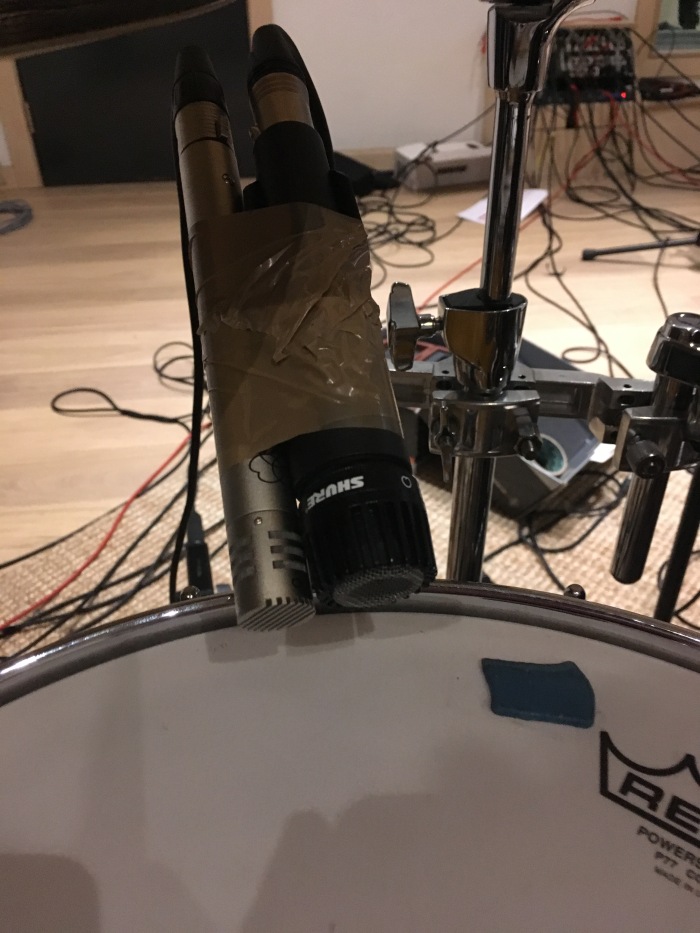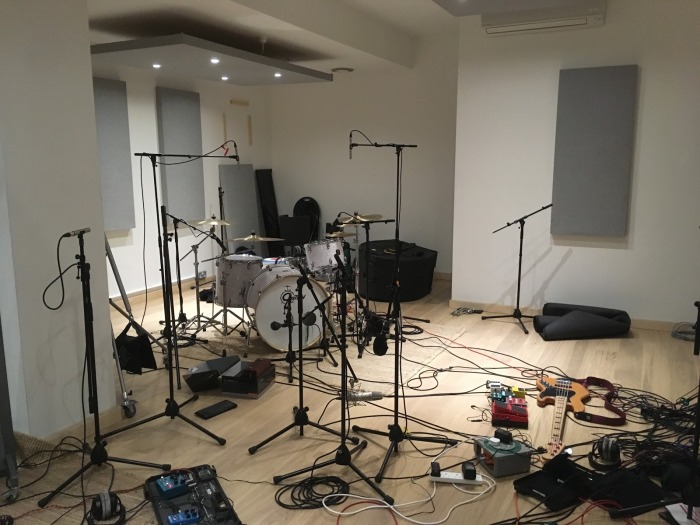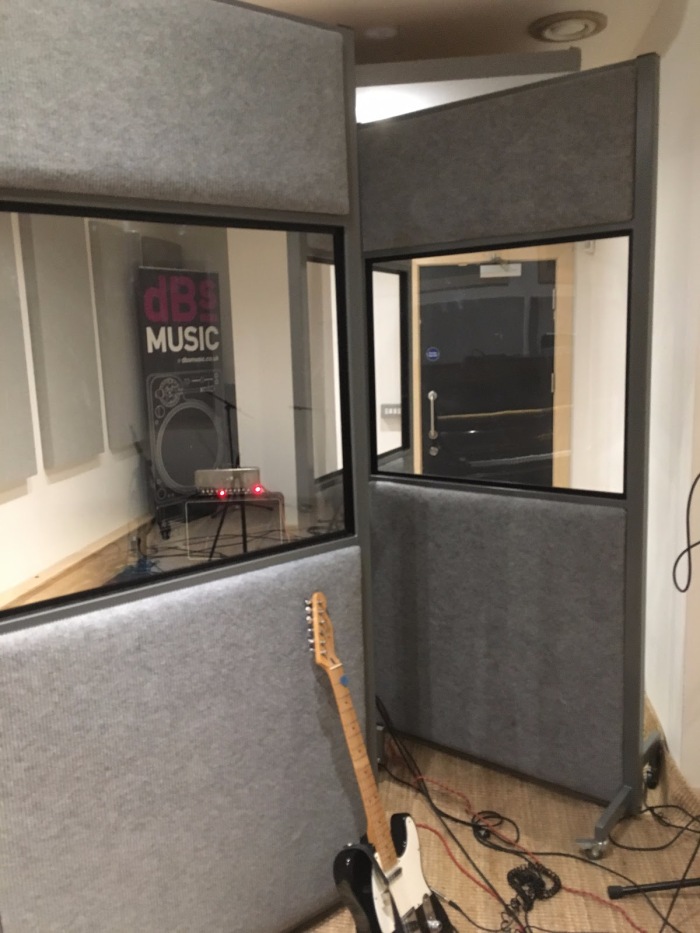Drum Room Mics
My last recording session involved some experimentation with a few different room mics so thought I would explain them in this blog post. The reference tracks that the band gave me all had big roomy drums, so I used this session to experiment with a few different positions.
The first was a u87 placed around the corner, facing away from the drums. This position had no direct sound, so captured lots of the rooms characteristics. The purpose of this microphone was to add sustain and decay to the drums, especially the snare. As the microphone was so far away from the drum kit it had a slight delay to the close drum mics, which helped to achieve the sustain. The drummer hit the snare drum hard and consistently and I drove this quite hot through the API desk, this helped get a really punchy sound.
Mixing
This microphone had lots of resonant peaks, so the first process was to use an EQ to attenuate these. By using a lowpass filter it will take out lots of messy rumble and make sure it’s not clashing with the low end of the kick drum.
To help bring more room tone in the the drums, a compressor added to the chain. It was hit pretty hard to get the most out the rooms with a slow attack and fast release to make sure it didn’t choke the transients.
However it was still sounding a bit too natural. It needed more aggression and character to the sound. As this mic is just going to be blended in, there was room to get away with adding more processing to alter the sound. I added the decapitator and add a bit ot drive in the N setting.
The next room mic was a Coles 4038 placed above the kick drum facing the edge of the snare drums. The idea was inspired after reading the article: Inside Track: Alabama Shakes’ Sound & Color (will add a link at the end). Engineer Shawn Everett talks about how most of the drum sound for some of the songs came from a ribbon microphone (RCA 77) in that position. I was blown away by the drum sound in that record so had to try it!
The microphone sounded great! It captured loads of punch from kick drum and lots of crack from the snare drum. For this band’s sound it wouldn’t have worked to use this as the main drum mic but blended in it added lots of punch to the drums. For mixing I started by cutting off the extreme lows and attenuated some low mid muddyness.
To create a console emulation and add some saturation, I selected the Brit 4K E from Slate Digital’s virtual console collection. Then used the SSL eq to boost some highs and add a bit more bottom end. Next I hit the FG-116 compressor at about -5dB, to tighten up the sound.
Finally to emulate a tape machine I used slate digital’s virtual tape machine. This added a little saturation and smoothed out the high end.
SOS article: http://www.soundonsound.com/people/inside-track-alabama-shakes-sound-color




